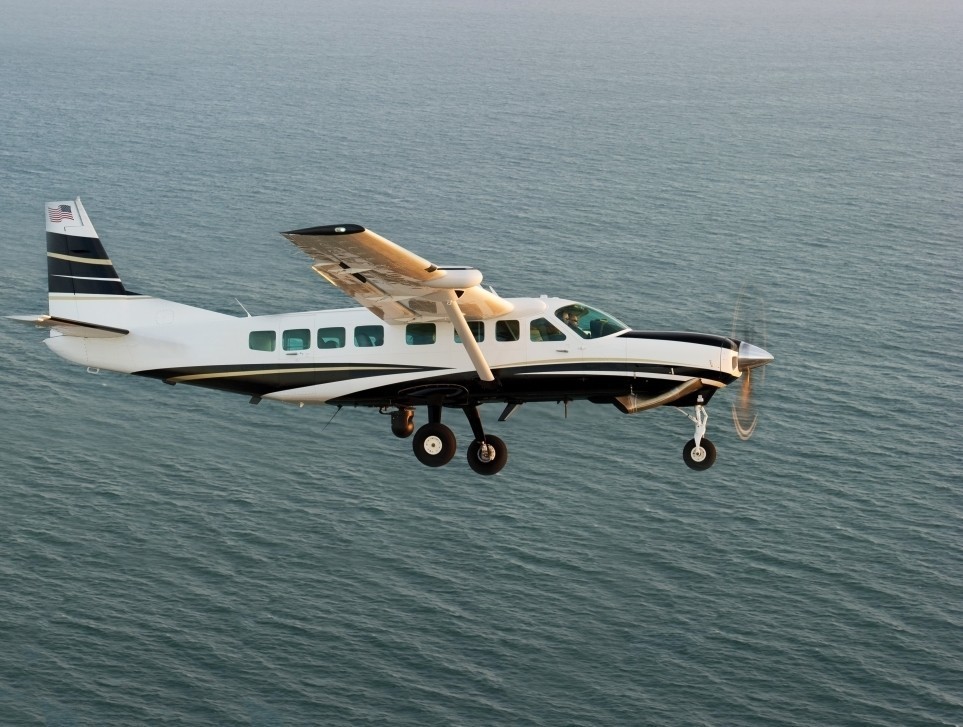- 25 Nov 2019
- AvBuyer
- Multi-Mission Aircraft
An Overview of Manned Multi-Mission Aviation
Patrick Ryan offers an overview of manned multi-mission aviation, discussing the mission categories within the sector, which are the popular aircraft types, and the equipment typically used...
Back to Articles
There’s an emerging realization that aviation and humanity are dependent on manned and unmanned Multi-Mission (MM) operations or services as a critical third pillar of aviation. Here, Patrick Ryan focuses the role of manned aircraft within Multi-Mission aviation…
The aim of this primer is to highlight the main applications, platforms, systems, and benefits associated with this pillar of civil aviation as they relate to Manned Multi-Mission aviation.
Together with our Overview of Unmanned Multi-Mission Aircraft we’ll cover the full spectrum of Multi-Mission aviation, helping de-mystify a sector of aviation that has traditionally been perceived as a cluster of many stand-alone independent services with all their autonomous cultures, jargon and acronyms.
In other words, we’ll link Multi-Mission operations under a single pillar of aviation, just like General Aviation and Commercial Transportation.
How are Multi-Mission Operations Defined?
To quote our article ‘What are Multi-Mission Operations?’, multi-mission operations fly everything that General Aviation (GA), the airlines, air charter and military operators don’t.
The sector essentially comprises civil aircraft (manned and unmanned) used for specialized services in industries such as agriculture, construction, media, recreation, law enforcement, medical, advertisement, aircrew training and many more.
Also, even though some multi-mission aircraft operations look like military operations, most that support military contracts or public safety missions are regulated by civil aviation authorities. Even commercial firms that support military type operations (i.e. contractor own/contractor operated Intelligence, Surveillance and Reconnaissance (ISR) missions) operate under civil aviation regulations and standards.
How are Multi-Mission Operation Organized?
Multi-Mission operations or services essentially fall into three domains, including:
- Civil
- Public Safety
- Defense
Within each one of these domains are specific services that focus on specialized functions or missions. In a general way, you can divide these as data-information management, utility, or both (i.e., Multi-Mission).
Civil
- Mapping and Surveying
- Monitoring and Inspecting
- Photography and Cinematography
- Broadcasting
- Advertisement
- Glider Towing and Skydiving Hoisting
- Crop Dusting, Monitoring and Seeding
- Pilot and Crew Training
- Insurance Risk and Claims Management
Public Safety
- Police Patrol
- Police Surveillance and Investigation
- Fire Fighting
- Border & Maritime Patrol
- Search and Rescue
- Ambulance and Medical Evacuation
- Emergency and Disaster Relief
Defense
- Command and Control
- Intelligence, Surveillance and Reconnaissance
- Electronic Warfare
- Research and Flight Testing
- Aerial Targets
- Pilot and Crew Training
What are the Multi-Mission Manned Aircraft Missions, Platforms & Systems?
Of all the different types of applications or services that fall under Multi-Mission operations, and just as a sample, the following are three unique roles or applications that heavily utilize manned aircraft.
Each has its own set of missions, stakeholders, ancillary systems and equipment. Even though many of these services sometimes utilize or prefer the same type of aircraft and equipment, the cultures, training and standard operating procedures can be relatively different.
Civil (Commercial Providers): Mapping & Surveying
In a general context, Aerial Mapping and Surveying is a process of collecting geographical information using airborne vehicles. Other terms you might see are Aerophotogrammetry, Aeromagnetic Survey, or Airborne Scanning.
Overall, this is the practice of using different technologies such as aerial photography, radar, magnetometer, or lasers to produce usable products for specific end-users.
The type of manned aircraft used in Aerial Mapping and Surveying varies widely. However, the preferred aircraft for this sector are primarily fixed-wing and then helicopter platforms. The most popular aircraft are single- and twin-engine fixed-wing aircraft like the Cessna 172, Diamond DA-42, Cessna 404 Titan, up to the Viking Air 400.
The second most popular aircraft types are light and medium-sized single main-rotor helicopters like the Robinson R44, Bell 206, and Eurocopter AS-350.
Meanwhile, the normal type or baseline of Aerial Mapping and Survey systems that are integrated or utilized onboard an aircraft are:
- Sensors (Light Detection and Ranging (LiDAR), Magnetometers, Aerial & Terrestrial Cameras);
- Gyro-Stabilized Mounts;
- Computer & Flight Navigation Software;
- GPS & Inertial Measurement Units (IMUs); and
- Data recorders.
Public Safety (Commercial & Public Providers): Police Patrol
In the field of airborne law enforcement, aerial police patrol is the use of aircraft in support of routine police operations. Police organizations commonly use aircraft for traffic control, ground support, high-speed car pursuits, observation, and control of large-scale public events or public order incidents.
The preferred aircraft for this industry sector tend to be first helicopters and then fixed-wing platforms. The most commonly used aircraft are light and medium-size helicopters like the Robinson R44, Bell 206, Eurocopter AS-350 and EC-135.
The next most commonly used aircraft are single and twin-engine fixed-wing platforms like the Cessna 172, Cessna 206, Vulcanair P.68, and the Pilatus PC-12.
The usual types of systems and equipment integrated or utilized onboard a Police Patrol aircraft include:
- Sensors (Electro-Optical Infra-Red (EO/IR) Full Motion Video (FMV));
- Night Vision Systems;
- Mission Management Software/Hardware (Augmented Reality System (ARS));
- LOS Air-to-Ground Radios;
- Loudspeaker Systems;
- Searchlights;
- Winches & Winch Cables;
- Rescue & First Responder Equipment; and
- Tactical Equipment.
Defense (Commercial Providers in Support of Public Contracts): ISR
Aerial Intelligence, Surveillance, and Reconnaissance (ISR) is the coordinated and integrated activity of gathering, managing and delivery of timely, accurate, relevant and consistent information and intelligence to support military operations.
Specifically, aerial ISR comprises multiple activities related to the planning and operation of systems that collect, process and disseminate data.
The preferred aircraft for this industry sector (contractor own/contractor-operated) are fixed-wing platforms, and the most commonly used aircraft are medium-size single- and twin-engine turboprop fixed-wing aircraft like the Cessna 208, Pilatus PC-12, Beechcraft King Air 350, and the De Havilland Dash-8.
At the lighter end, you’ll see the Diamond DA-42, Bitten-Norman Defender 4000, and Vulcanair P.68.
Some of the typical type of ISR systems integrated or utilized onboard ISR aircraft are:
- Sensors and Communication Receivers (Electro-Optical Infra-Red (EO/IR);
- Full Motion Video (FMV);
- LiDAR;
- Synthetic Aperture Radar (SAR);
- Hyperspectral Imagery (HSI);
- Signals Intelligence (SIGINT) Systems;
- Maritime Patrol Surface Search Radar;
- Recorders;
- Designators;
- Night Vision Systems;
- Mission Management Software/Hardware;
- LOS/BLOS Air-to-Air/Air-to-Ground Radios; and
- Electronic Support Measures/Countermeasure systems.
Again, the above are just samples of three specific missions in a much larger constellation of services that manned Multi-Missions aircraft operate, along with flight training, aerial broadcasting, glider towing and many more…
What are the Benefits of Multi-Mission Manned Aircraft?
The benefits of Multi-Mission manned aircraft continue to provide unique capabilities that land, sea and even (in some cases) unmanned vehicles cannot. The primary and unique benefits of manned aircraft bring to all industry sectors are:
Payload: Manned aircraft are still able to carry a variety of large and specialized loads. In the Multi-Mission operations sector, this is critical. As you read above, most Multi-Mission aircraft are integrated with many different systems that make it effective for its intended purpose or specialized mission.
Range & Endurance: Manned aircraft are still fast and efficient, relative to land and sea vehicles. With improvements in the size, weight and capabilities of propulsion, airframes, and avionics systems, the range and endurance of many manned aircraft are equal to, or better than the previous generation of GA aircraft that Multi-Mission operations utilize.
For example, some types of manned aircraft (STOL fixed-wing and helicopters) can travel long distances and land in very confined and remote locations in a relatively short time, providing a reliable, cost-effective option in certain situations and operations.
Accessibility: Given that current aviation infrastructures, airspace, regulations and procedures are based on manned aircraft operations, operating manned aircraft is still a relatively efficient and effective effort because of manned flight’s long history of trial and error, development, management and investment.
Because of this, Multi-Mission operators can navigate an established industry to purchase, integrate, hangar, and fly manned aircraft in all corners of the world without the cost of “re-inventing the wheel”.
Availability: Since the end of WWII, the development and production of manned GA aircraft has been robust. The availability of new and used light to heavy aircraft in both the fixed-wing and rotorcraft categories is excellent and available. With this, the Multi-Mission sector has the means to configure the right airframe to the right equipment, budget and mission.
When it comes to the ancillary services, systems and kits that make a GA manned aircraft a Multi-Mission aircraft, there are countless industries that provide specialized hardware, software, products and services.
Further, there’re many firms that make it their mission to provide the engineering, modification, and integration of systems to turnkey a GA aircraft into a Multi-Mission solution.
In Summary
As you can see, Multi-Mission operation is not a bunch of individual specialized operations folded ‘here and there’ between GA, Commercial Transportation and Military Operations. It’s a stand-alone pillar in civil aviation with its specific description, structure and industry base.
The types of platforms now used in aerial work operations are both manned and unmanned.
Today, each type of platform brings its unique capabilities that work well for some types of missions as opposed to others.
Manned Multi-Mission aircraft provide distinctive capabilities like payload, range, accessibility and availability in certain scenarios that unmanned aircraft can’t at this time.
Are you looking to understand how unmanned aircraft are used in Multi-Mission operations for the unique capabilities they bring to the third pillar of civil aviation? Read our Overview of Unmanned Multi-Mission Aircraft.
- Read more about Multi-Mission Aircraft at the Multi-Mission Aircraft Hub.


